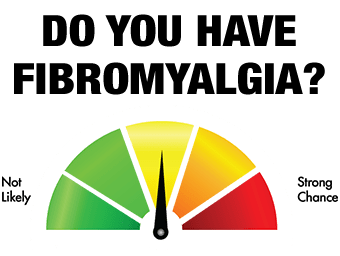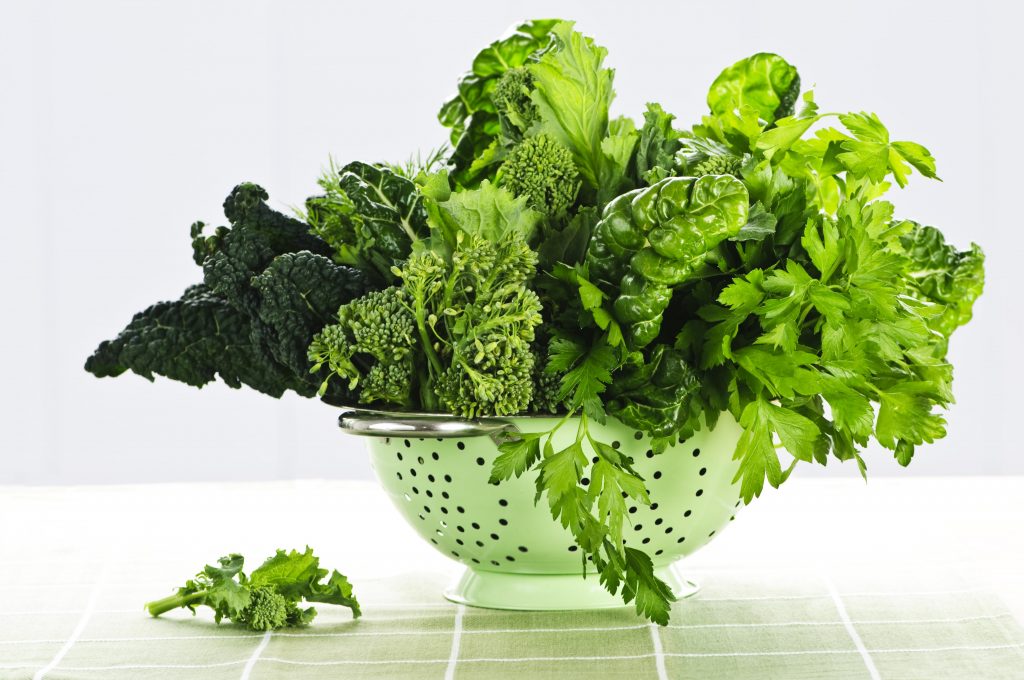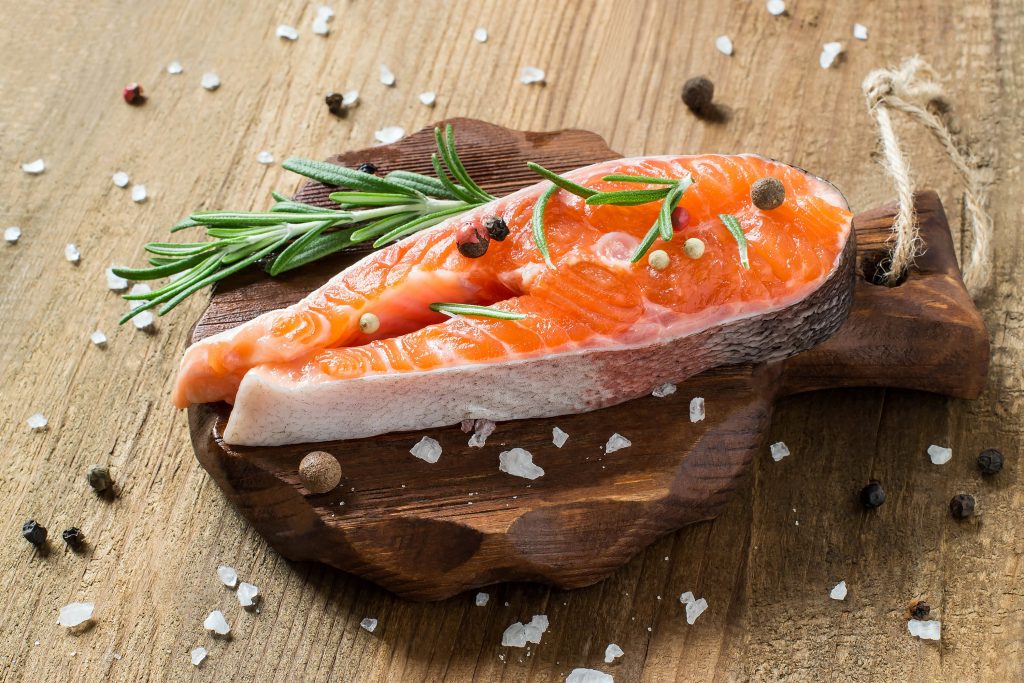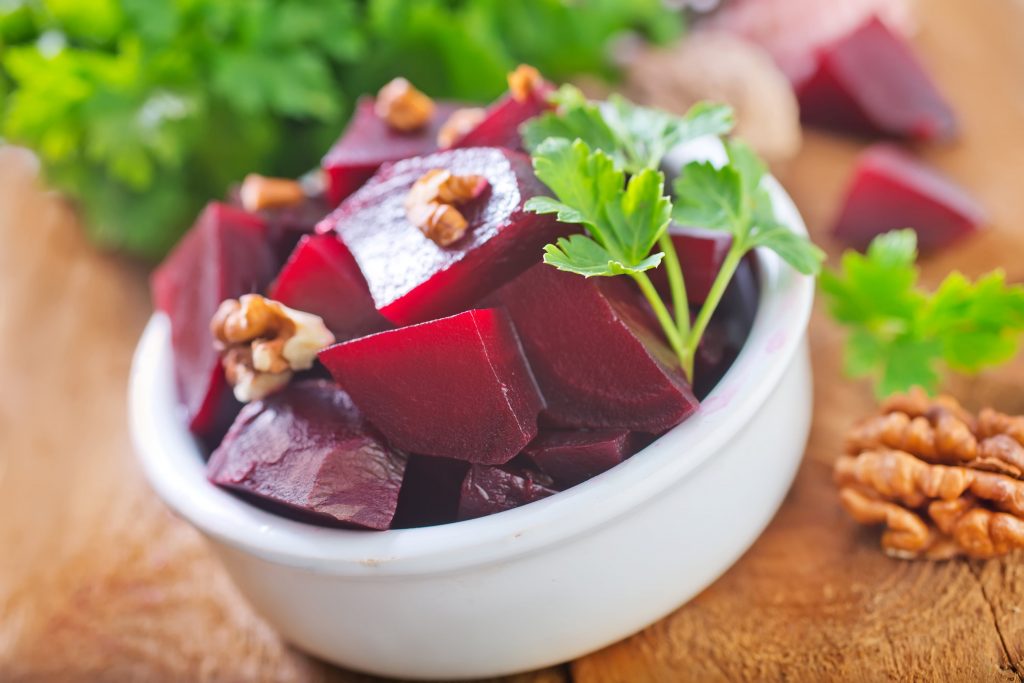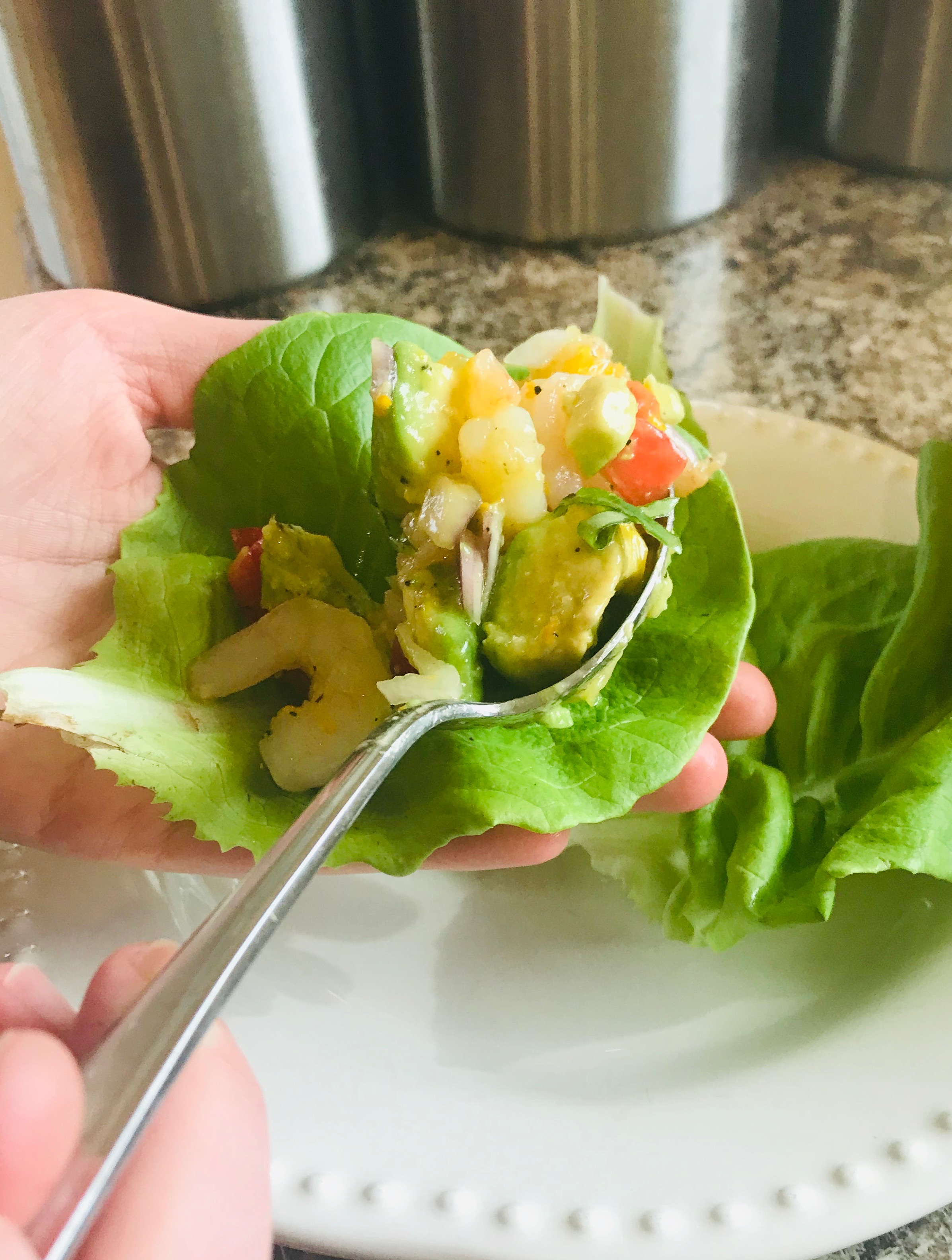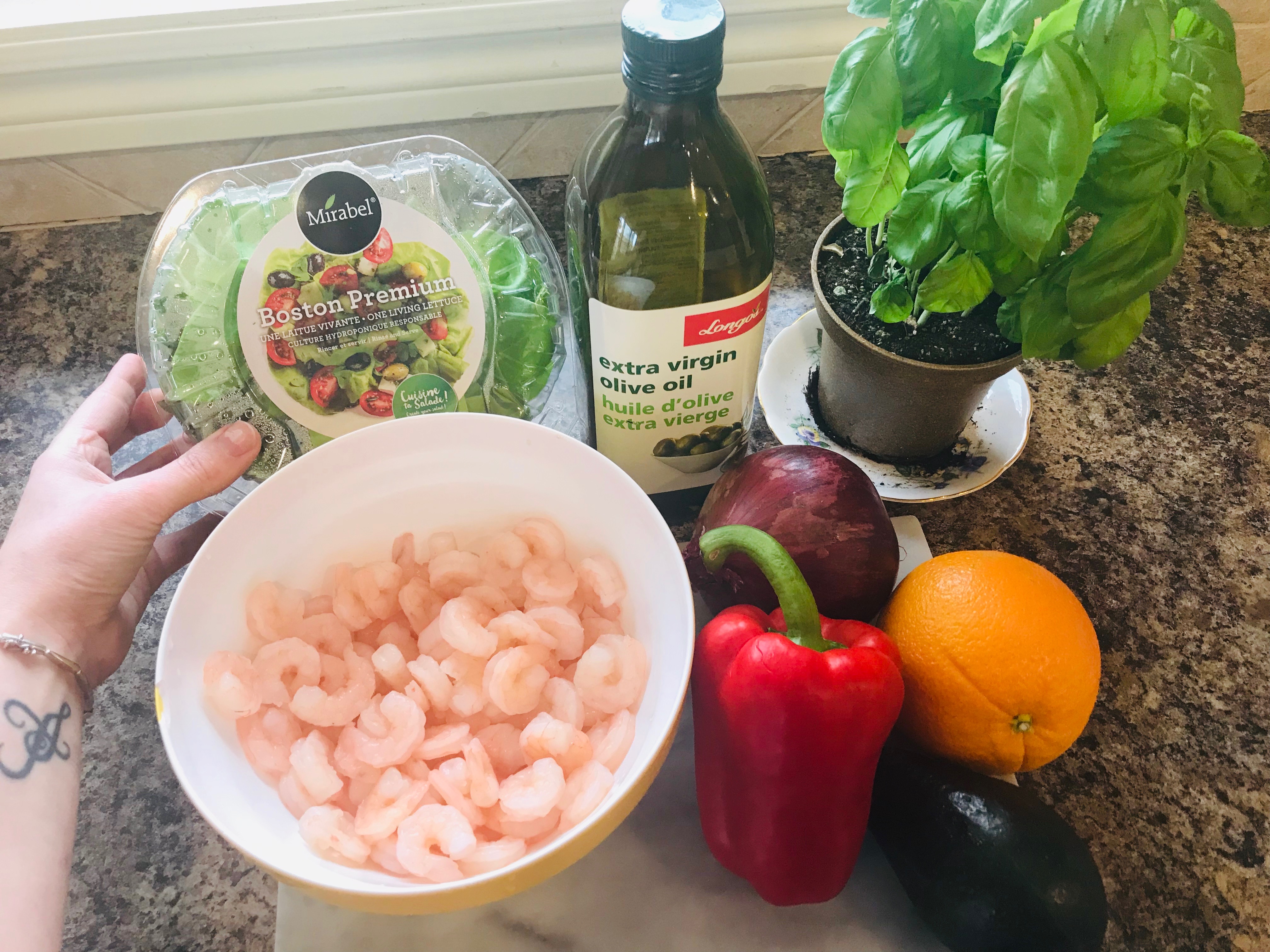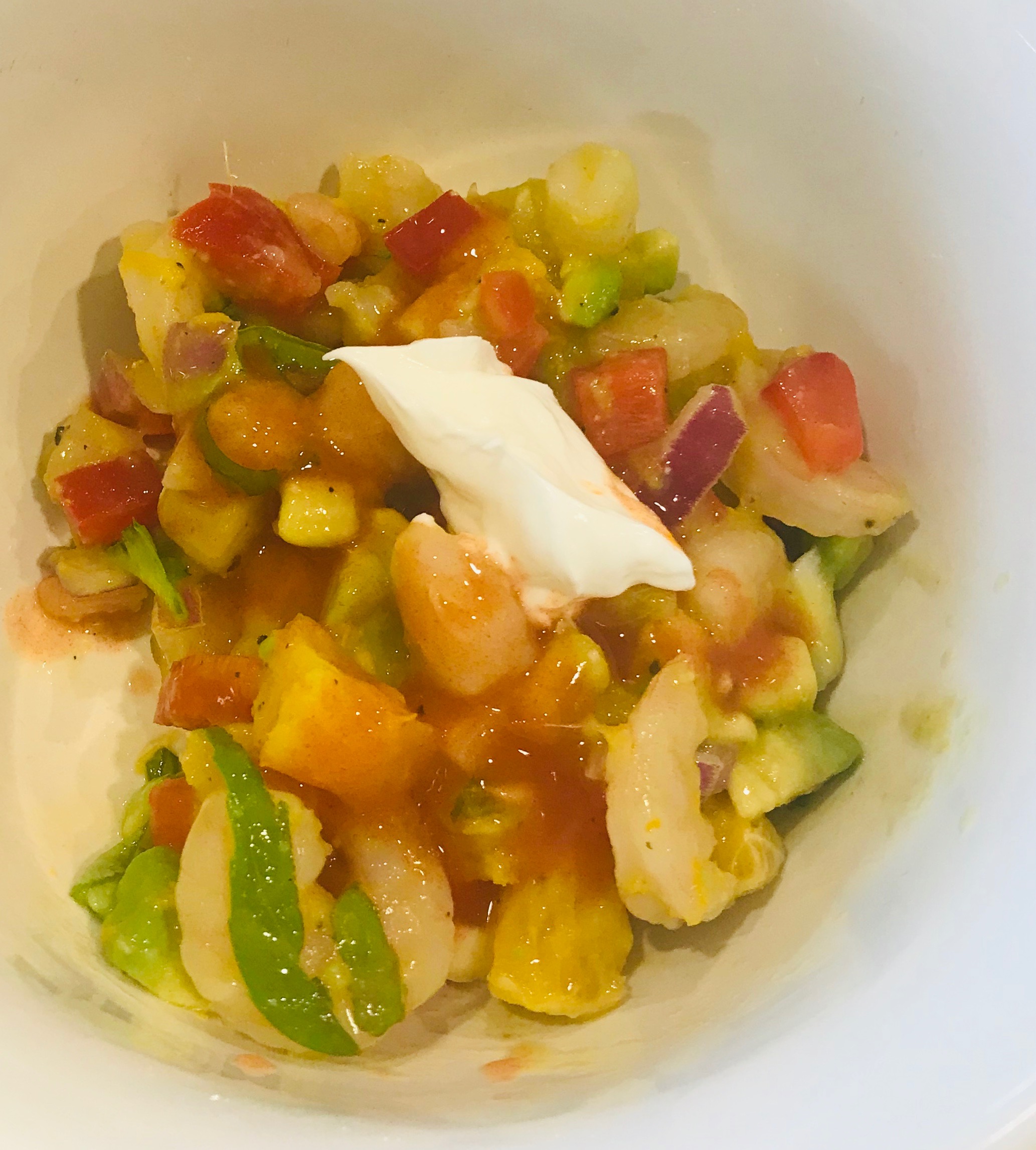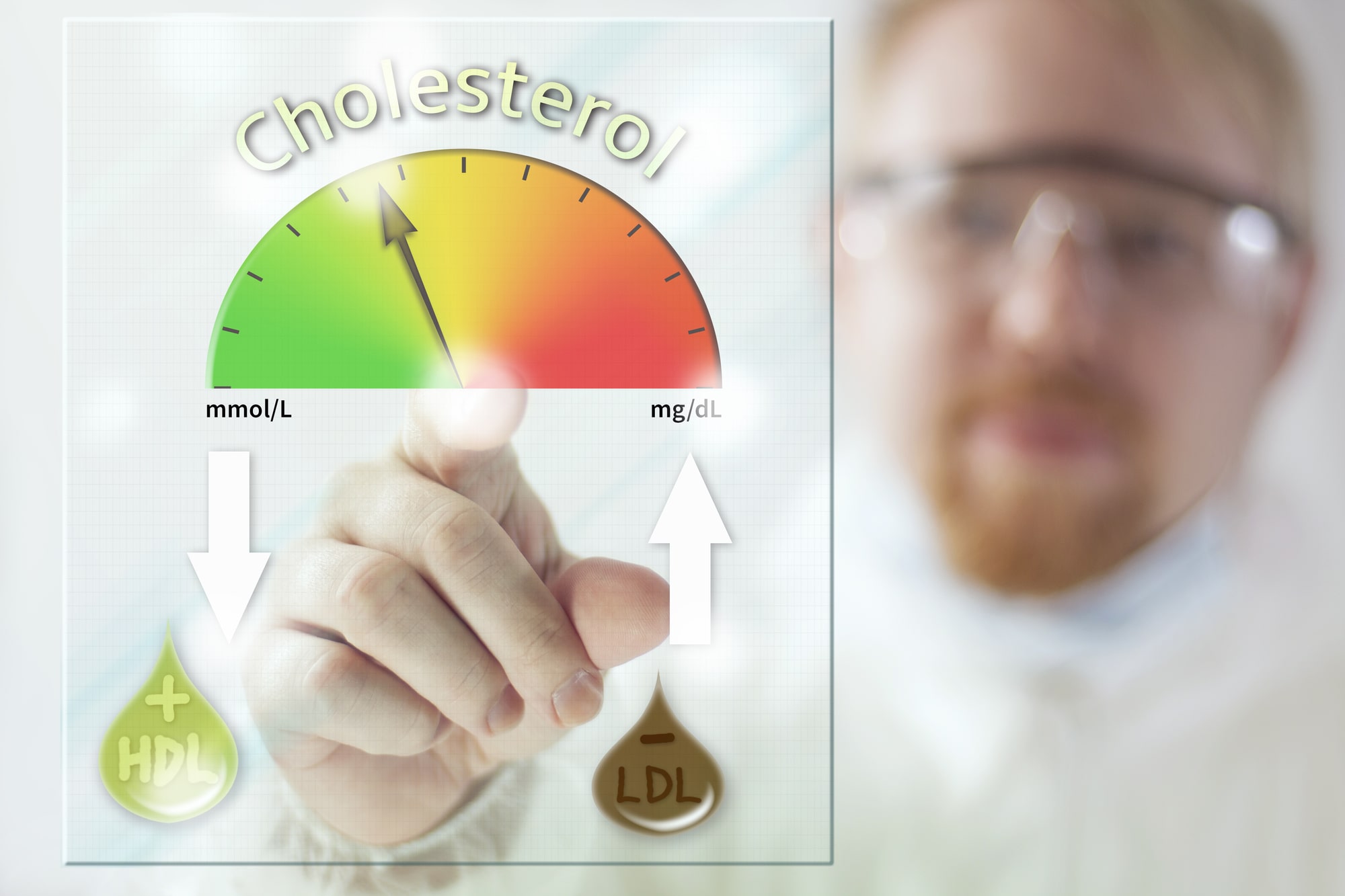Our medical review team will ensure the following criteria is met:
1. Is it original writing? Does the article contain significant portions of plagiarized materials?
2. Are the main concepts well and clearly defined?
3. Are the articles central tenets backed by adequate evidence?
4. Are there any gaps or inconsistencies?
5. Is the writing clear and easy to understand?
6. Does it advance knowledge?[/mpc_icon_column]
This is a list of foods that you should avoid if faced with Fibromyalgia symptoms:
- Sugar
- Bad Fats
- Grains
- Caffeine
- Aspartame & Artificial Sweeteners
- Gluten
- Dairy
- MSG
Believe it or not, what you eat has a major impact on how you feel. Do you believe or have been told that you suffer from fibromyalgia? Whether you think you have mild or severe fibromyalgia symptoms, consider following a proper fibromyalgia diet in order to manage your condition successfully.
At Family Health Advocacy we always promote addressing the underlying cause of your symptoms as the ultimate goal however when you’re stuck in a chronic pain cycle we understand that sometimes you need a little help to break free.
Join our Facebook Support Group for FREE and get instant access to the Truth About Fibromyalgia Video Series available within the group.
- CLICK THIS LINK ➡️ Family Health Advocacy Fibromyalgia Support Group
This is a growing community hosted by Family Health Advocacy co-founders.

Fibroyalgia Diet – Foods That Help Fibromyalgia
This is a list of foods that may help with Fibromyalgia symptoms:
- Foods rich in Magnesium
- Spinach
- Quinoa
- Almonds
- Cashews
- Peanuts
- Dark Chocolate
- Foods rich in B12
- Grass Fed Beef, liver, and chicken.
- Fish and shellfish
- Eggs
- Turmeric
- Water (Lot’s of it!)
- Avocados
- Nuts and Seeds
- Other healthy fats
- coconut oil
- grapeseed
The Best Diet for Fibromyalgia
When it comes to fibromyalgia and diet, it’s more about what you shouldn’t eat then what you should. I think nearly everybody who has the slightest interest in health or nutrition knows how bad sugar is. Not only is it responsible for the obesity epidemic in North America, but it is also one of the main culprits for disease and lowered immunity. Sugar consumption has been linked to diseases ranging from metabolic syndromes, chronic fatigue, diabetes and headaches to cardiovascular disease, ADHD, cancer, emotional problems (ie. depression) and of course inflammation and chronic pain syndromes.
The Simple Truth About Sugar
Sugar has no nutritional value. Consider this, sugars and simple carbohydrates may be easy go-to foods when you are on the run or too tired to prepare a meal. However, that little bump of energy will result in a sugar crash which will cost you more energy in the long run.
Remember, high glycemic index foods will raise your blood sugar fast and then drop it quickly. Thus, resulting in reactive hypoglycemia. Also note, there is no vitamin, mineral, or fiber value in sugar. When you consume sugar, you are depleting nutrients that have been stored because your body needs to use energy to heal from the havoc sugar creates in your system.
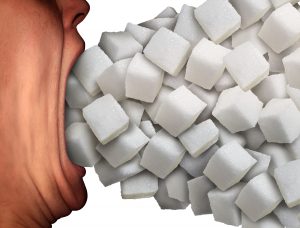
Sugar Addiction
Just like cocaine, people can have a strong addiction to sugar. Most people don’t even know it. Some researchers believe in order for people to deal with their sugar addiction, they should be treated in the same way as people addicted to drugs.
Sugar metabolically shifts your body from a fat-burning machine to a sugar-burning, energy-saving machine. It shifts your body into a starvation mode. Even though you have plenty of energy stored, your cravings for more sugar remain.
The Effects Of Sugar On Leptin & Insulin Levels In Your Body
High glycemic index foods or sugary foods raise insulin and leptin levels significantly. Eventually leading to insulin and leptin resistance. Eliminating sugars allows for your body to heal from the resistance and return to homeostasis or a balanced state. In fact, a nutrition plan eliminating sugars for a period of time is necessary to allow for leptin and insulin levels
to be regulated and receptors to heal.
Eventually, you will be able to re-introduce “healthier” natural sugars in moderation. When
leptin and insulin levels are restored, your body will shift back to a fat-burning and energy-using machine. Also, your appetite will regulate. This means you will have more energy. The fatigue associated with your fibromyalgia will decrease. Your muscles will be stronger and your cravings will be minimized.
Hidden Sources Of Sugar
It’s easy to point out sources of sugar in the convenience store like candy, soda, chocolate bars, and sugar-coated cereals. However, there are a lot of hidden sources of sugar we consume regularly.
Examples Of Food Items With Hidden Sources Of Sugars include:
- crackers
- bread
- energy bars
- yogurt
- pizza
- fruit drinks
Even foods promoted as “healthy” or “natural” are layered with sugars. According to the U.S. Department of Agriculture, the average consumption of sugar per person, per year in 2015 was 94 grams per day or 76 pounds per year—which is more than a five-pound bag of sugar each month. This is crazy!
It’s difficult for consumers to truly understand the sugar content in food sources due to lax labeling guidelines. The Nutrition Facts label does not list “added sugars” due to the manufacturer’s difficulty in determining the amount of added sugars in a food or drink.
Common Sugars & Their Aliases
During processing, some sugars are converted to other ingredients. You can now see how the “Nutrition Facts” on the label can be misleading. More important than the Nutrition Facts is the “Ingredient List.” Added sugars are only listed in the Ingredient List.
Ingredients are listed in the order of weight, from most to least. Manufacturers can also easily disguise the layers of sugar in the product by listing them as different names. There are at least 57 different names for sugar that they can use.
Common Sugars Or Aliases Found In Ingredient Lists Include:
- high fructose corn syrup
- sucrose
- evaporated cane juice
- barley malt
- fructose
- honey
- dextrose
- raw sugar
- maple syrup
- invert sugar maltose
- white sugar
- rice syrup
- sugar syrup
- rice malt
- corn sweetener
- agave
- nectar
- Maltodextrin
- fruit juice concentrates
- glucose
- lactose
- cane crystals
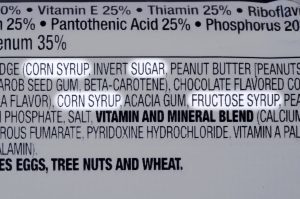
So, if the manufacturer list the sugars as separate ingredients, the overall quantity of sugar is divided. Therefore it will be spread throughout the ingredient list to appear less offensive. Don’t run off and buy “sugar-free” products either! It’s a trap!
Read the label as aspartame is often added to “sugar-free” products. Aspartame is a neurotoxin that has a major impact on your health. Stay away from sugar and even farther from Aspartame.
Helma’s Chronic Pain Story
“Over 15 years ago, I suffered from back pain. It was so painful that I was unable to go to the gym. Something I loved doing! I was constantly tired and always reaching for food, hoping it would increase my energy. Essentially I became a sugar addict.
I was sedentary, tired, making bad food choices, and spiraling into poor health. The pain never went away. In fact it was getting worse.
I was frustrated and tired of it. I was diagnosed with high blood pressure and
high cholesterol and started taking medication ten years ago. To top it all off, I was also diagnosed with depression.
The idea that I would have to suffer like this for the rest of my life gave me anxiety. Even my career was at stake. I was frequently calling in sick and inconsistent with my quality of work.
I watched as my colleagues got promoted within the company as I was essentially left behind.
Luckily, at the age of 55, my friend referred me to a Family Health Advocacy practitioner who is a functional medicine practitioner.
I followed their protocol, improving my nutrition. Making practical changes. I
was given guidance on exactly what to eat and not eat. It was explained to me why and how certain foods serve my body well and their benefits.
With accountability and a better understanding of how my body works, I started to see changes after week one. I found making changes to my food choices to be simple. Within four weeks, I had more energy and had lost 15 pounds.
Of course with the weight loss and feeling the energy I desperately craved, my mood changed. I could see my relationship with my husband start to strengthen. We started to become more active together and enjoyed each other’s company on evening walks.
My entire family embraced the change in my food and lifestyle. We no longer had pop, chips, chocolate, sugary cereals, and granola bars in our kitchen cupboards. My counter and fridge came alive with the colour of live fresh foods.
One year after I started the program, I had lost 58 lbs and I was still losing weight.
Last weekend my entire family went on a ski trip. This would have once been a distant
unreachable dream, and now I feel like I’m living again.
Without my friend’s help, I would still be in that dark place. I am grateful he pointed me in the right direction. By giving me guidance and a personalized plan that actually worked, my functional medicine practitioner brought me back to life.”
Gluten and Fibromyalgia
Processed Grains Are Taking Over North America
Grains are rarely found as whole grains anymore in the Western world. Grains are now highly processed for convenient human consumption. This results in the loss of their nutritional value.
In North America, consumption of processed grains is higher than ever before! Grains are cheap to manufacture and they hold a long shelf life. Compare the five- to seven-day shelf life of an organic whole grain loaf of bread, free of artificial preservatives, to that of pre sliced white Wonder Bread at 13+ days of shelf life. It’s easy to see how someone who doesn’t understand the negative health impact of consuming processed refined grains can
be swayed by the long shelf life and thin price point.
Consumers love processed or refined grains because they are easy to prepare. Because of this, they have now a cultural staple in our meals. Refined and processed grains typically have a higher glycemic index and turn to sugars in your digestive tract. This contributes to the sugar cascade resulting inflammation.
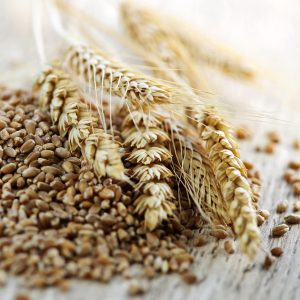
Are You A Glutton For Gluten? Consider This!
Symptoms of gluten sensitivity can be different for each individual and can present themselves in varying degrees and are similar to those of fibromyalgia.
Symptoms Of Gluten Sensitivity And Fibromyalgia Include:
- fibro-fog or brain fog
- weight loss resistance
- migraines/headaches
- fatigue
- irritability
- mood changes
- depression
- lack of muscle control
- chronic muscle pain
- digestive problems like bloating
- widespread inflammation leading to increased pain
In our clinical experience, we have observed many patients who have had a noticeable decrease in pain when they eliminate gluten from their diet. Furthermore, a study in Rheumatology International found that patients with Fibromyalgia achieved significant improvements when they went on a gluten-free diet.
How Nutrition Affects Your Overall Health
Countless studies and research support the fact that your nutrition affects your overall health. Consuming sugar, processed grains, and other inflammatory foods wreak havoc on your body. Gluten (wheat) actually damages the lining of the digestive system leading to a lack of nutrients being absorbed. For example, vitamins such as B12 and all fat-soluble vitamins, are often deficient in fibromyalgia sufferers, resulting in further inflammation.
Symptoms Of Gluten Sensitivity Causing Inflammation:
- Digestive problems (bloating, constipation, diarrhea)
- Fatigue
- Sleep disturbances
- Brain fog (“fibro fog” sound familiar?)
- Weight gain
- Widespread pain
- Headaches/migraines
- Yeast infections
- Acid reflux/GERD
All of the gluten sensitivity symptoms are very similar to those of fibromyalgia. Is it becoming more clear how important nutrition is to your health and well-being?
Fibromyalgia Diet Mayo Clinic Facts
Although the Mayo Clinic doesn’t offer much guidance for patients when it comes to Fibromylgia and diet, check out this article from WebMD to see what they’re saying: Fibromyalgia Diet Plan
Remove Bad Fats and Add Good Fats
Fat has gotten a bad rap! Not all fat is bad! In fact, we need good fats in our diet as they have many health benefits. Good fats deliver fat-soluble vitamins to our body. Support metabolism, cell communication, immune function, and hormone regulation. Good fats are important for proper brain function, decreasing symptoms of depression, and improving memory.
‘Bad fats’ such as hydrogenated and partially hydrogenated fats, also known as trans fats, cause cellular congestion and inflammation. Bad fats are strongly linked to heart disease and diabetes. Two of the many chronic diseases due to inflammation.
Bad fats causing cellular congestion and oxidative stress to the cells result in the development of symptoms associated with widespread inflammation, chronic fatigue syndrome, and fibromyalgia. Bad fats result in decreased nerve transmission and decreased focus, memory, and brain function.

Why Are We Consuming Bad Fats?
Just like refined and processed grains, they are cheaper and have a longer shelf
life! They are used in many packaged foods. As a result, most people are consuming too much omega 6 and trans fat and not enough omega 3. There is a ratio imbalance. Most people eat a lot of trans fat without even realizing it.
Although it may be easy to spot the obvious bad fat foods that are fried and battered, the majority of our bad fat intake is hidden. Most people look at the big square label on the side or back of a food box titled Nutrition facts. This part of the food label
is confusing and misleading. If the amount of trans fat in one serving size of that item contains less than 0.5 grams of trans fat, the product can then be labeled with “0 percent” trans fat. The trick of the industry is to decrease the serving size so that they can manipulate the label to look like a cleaner product than it is!
Because of this, the next time you read the serving size, we are confident you will be feeling both frustrated and betrayed. It is essential to read beyond the Nutrition Facts. Dig deep into the ingredient list when grocery shopping, find the hidden sources! Look for the words “partially hydrogenated” in the ingredient list. If you see it, then the product contains bad fats!
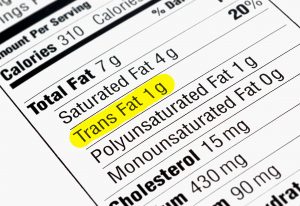
Why Do Manufacturers Use Bad Fats Or Trans Fats In Their Foods?
Trans fats are used to make liquid vegetable oils more solid (like margarine) which increases shelf life and helps maintain the perceived “freshness” of the food. That’s why you will find “hidden” sources of bad fats in packaged food items.
Examples Of Foods That Contain “Bad Fats” included:
- crackers
- coffee creamers
- cookies
- chips
- doughnuts
- frozen meals
- pizza crust
- margarine
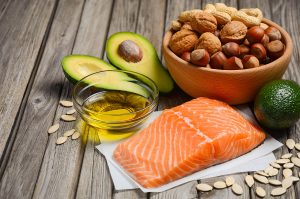
If You Are Looking To Heal & Decrease Inflammation, Crank Up Your Essential Fatty Acid Intake!
It’s time to increase our good fat intake! Good fats are the number one deficiency in North America and are essential for good health.
Examples Of ‘Good Fats’ Include:
- avocados
- coconut oil
- olive oil
- flax
- fish
- healthy meats
- nuts
- seeds
Meat can be healthy if you choose to use quality sources. In fact, meat provides nutrients and amino acids, which are beneficial to healing fibromyalgia. If you are a meat-eater, it’s important to consume only healthy meats. These include grassfed or pasture-raised organic meats. Choose free-roaming, hormone and antibiotic free. These sources contain good fats in the ideal ratio.
Commercially Raised Animals VS Grass-fed Animals
Commercially raised animals are grain fed, which mean they are fed food that they don’t naturally eat. Grain-fed animals have an altered fatty acid ratio and as a result, saturated fats become bad fats.
Grass-fed and pasture-raised animals contain essential fatty acids like arachidonic acid and conjugated linoleic acid (CLA). A proper omega 3-6 ratio and helps detoxification. CLA is great for people with fibromyalgia because it helps decrease stored fat that accumulate as a result of the inability to exercise. It also helps to improve muscle mass.
Omega 3 has a powerful anti-inflammatory action. This is the reason why it is the most common supplement for fibromyalgia patients. When the omega 3-6 ratio is out of balance and there is more omega 6, it can result in increased inflammation and pain.
Best Supplements for Fibromyalgia
Quality meat is loaded with good fats but also contains other important nutrients. Vitamin B12 being one of them. Deficiency may appear similar to those symptoms of fibromyalgia.
- dizziness
- numbness
- brain fog
- fatigue
- weakness
- anxiety/depression
- aches and pains
- digestive issues
- decreased coordination and balance
A simple blood test by your health practitioner can identify a deficiency. A B12 supplement is one of the solutions to deficiency.
Creatine is found in meat and fish which helps with muscle function which is crucial when dealing with fibromyalgia.
Zinc is found in a variety of foods from meat, seafood, beans, seeds, lentils, and peas. It improves cognition and helps with “brain fog,” improves your mood and immune system. Zinc is important because it is also on the anti-inflammatory team.
If you’re struggling to include these foods or are a vegetarian then you can always supplement to ensure you’re getting enough. Always consult a registered health professional before adding any supplementation to your diet.

Thinking of trying a vegetarian diet? Well it’s All In The Meat!
Meats are rich in Selenium. This helps decrease inflammation, reduce free radicals and oxidative stress while increasing blood flow and circulation. There are many benefits to eating quality meat. However, they can be outweighed if they are highly processed commercial grade. Not only are commercially raised animals being fed foods they don’t naturally eat but they are given antibiotics in order to stay disease free in the cramped unsanitary pens they live in.
These antibiotics are found in the end product, meat. Hormones are also given to commercially raised animals to help “beef” them up. Not something you necessarily want or need in your food! So, avoid processed meats as they often contain preservatives like sodium nitrite and salt which aggravates pain and swelling.
The bottom line: You aren’t what you eat…you are what you eat ate. Choose your meats wisely. Meat is top of the food chain and worth investing in.
Water
Coffee, tea, and soda are not thirst quenching. In fact, they all contribute to dehydration and require you to drink more water.
Signs Of Dehydration Include:
- thirst
- fatigue
- irritability
- headache
- feeling faint and dizzy
- strong smelling and dark urine
Your bodyweight is made up of 60 percent water with 75 percent of muscles being made up of water. You can see how water intake is important for proper function and health.

How Much Water Should I Consume On A Daily Bases?
You have probably read that, as a general rule, you should consume eight eight ounce glasses of water a day. It’s referred to as the 8X8 rule. 8X8 is a start! However, everybody is different in size and has different requirements. Sweating, breathing, offsetting the drinking of diuretics, and getting rid of waste in your system requires more water intake.
When demands are high, you lose more fluid than you take in and become dehydrated. You will want to adjust your water intake depending on how often and for how long you work out. Also, you will need to adjust that rule if you are living in a hot climate since you are expelling water when you sweat.
Recommended water intake can be much more individualized. There are a lot of different ways to calculate how much water you should consume. Although the calculations may vary slightly, they all drive home the same undeniable fact. Water is essential for good health and staying energized.
Additional Benefits Of Drinking Water Include:
- controlling your body temperature
- aiding digestion
- carrying nutrients around your body
- cushioning organs and joints
- gets rid of waste
- keeps your bowels regular
Tips to Increase Water Intake
1. Drink two cups of water before every meal. Even breakfast! We often think that we are hungrier than we are because we confuse hunger with dehydration. Drinking before a meal will curb your appetite and help you with portion control.
2. Use a water container. We both have water containers we use in our treatment rooms at the office. Our team ensures that our water containers are full before our shift of seeing patients begins. They refill the containers at least twice during a three-hour shift. Water consumption is so important, however often forgotten about until signs of dehydration set in.
Not everyone has a team encouraging them to drink water and refilling their container throughout the day. So, find a container you love and set a goal for how many refills you will need during that day.
3. Flavor Please! We absolutely love water. Some people don’t. I get it. Have no fear, infusion is near! Add fruit like strawberries, watermelon, lemon, limes, cucumber, and berries to make your water more exciting to drink. Be creative and have fun. Be careful not to add artificial flavorings.
4. Start a morning and night routine. Begin the day with a large glass of water and end the day with a small glass of water. We drink a glass before bed each night. We also put a glass next to the bed to quench thirst in the middle of the night or first thing in the morning.
5. Fizz or carbonation can cause some digestive issues like heartburn, gas, and irritate ulcers. Carbonation also causes a change in bone density. Drinking carbonated water should be done in moderation and as an alternative to the soda, coffee, tea, and beverages you are looking to wean off of.
Inflammation
Inflammation is the initiating cause of chronic disease as it disrupts hormonal signaling throughout the body. Inflammation is also linked to chronic pain. When you are in a healing mode, it’s important to remember not all fruit are created equal. Some fruits have a high glycemic index and are high in acidity.
When focused on healing, you want to minimize sugar spikes. Stick to low glycemic index foods in order to help re-regulate leptin and insulin levels. While placing emphasis on reducing widespread inflammation in the body, stick to eating fruit in the morning and mid-day.
Intermittent Fasting
Fasting or intermittent fasting is gaining popularity and becoming trendy in the health and fitness world. Mostly because of the results people are raving about. However, humans have used fasting methods for thousands of years for many reasons . Reasons such as food availability, religious reasons, and sickness.
Intermittent fasting involves alternating cycles of fasting and eating. The focus lies on when you eat rather than what you eat. Combine the two and the results are even better! There are many different intermittent fasting methods but all of them divide the week into “fasting periods” and “eating periods.”
While you are sleeping, you are fasting. Intermittent fasting can be as simple as extending that fast a little longer by:
- skipping breakfast
- eating your first meal a little later in the day
- finishing your dinner earlier in the evening
The most popular intermittent fasting method is called the 16/8 method. Restricting your eating window to eight hours and having a fasting window up to 16 hours. Many people report they have increased levels of energy during the fasting periods.
Intermittent fasting is easier than most people would assume. This is one of the reasons why it’s gaining popularity. Although it’s popular as a weight loss method, there are many people who fast for general wellness including metabolic health and disease prevention. Numerous studies underline the health benefits of fasting.
Benefits Of Fasting Include:
- cellular repair
- hormone regulation
- increased metabolism
- weight loss
- reduced insulin resistance
- decreased risk of type 2 diabetes
- reduced oxidative stress and inflammation
- reduced blood pressure
- decreased risk of cancer
- reduced cholesterol
- improved brain function
- extended life-span
Research has also demonstrated that fasting improves the symptoms of fibromyalgia.
Paula’s Fibromyalgia Story
I was overweight and feeling constantly tired. I really did not feel good
about myself at all. Weighing in at 141 pounds at 5’3, I disliked looking at myself
in the mirror. I just felt embarrassed.
Not being very tall made my weight gain extremely noticeable and quite frankly it was uncomfortable for me both physically and socially.
I was tired and feeling sluggish. Unfortunately, I caught myself eating more and more and I was becoming less active. I was eating to feel better emotionally.
The more I ate, the more I wanted to eat. I was eating throughout the day. It was a vicious cycle. I thought eating three times a day, plus snacks, was the better way to stay healthy and maintain an appropriate weight for my height but it wasn’t helping me.
Initially I started intermittent fasting without actually intending to do so. As a teacher, I worked in a high-needs busy classroom. I learned more about intermittent fasting and started to make better food choices.
I lost 16 pounds and now weigh 125 pounds. Now, feeling better about myself, I don’t feel like I need to eat all the time. I eat when and if I’m hungry but it’s usually in the evenings. I’m now energized and feel more alive.
Orlando’s Fibromyalgia Story
Prior to starting intermittent fasting, I had gotten up to 289 lbs standing at nearly 5’10”. That is a lot of weight!
In my late 30s and early 40s, I was going to the gym for 4 hours at a time and I wasn’t really losing weight. I would just bulk up with muscle. My metabolism was slow.
The extra weight was really tiring me out and making me feel exhausted all the time.
I suffered from various strains, including a knee injury that made me slow down at the gym and the extra weight gain began. That is when the doctors taught me about intermittent fasting.
Everything made sense to me. Being busy at work, making time to meal prep, shop, cook, and eat became stressful. Once I started the intermittent fasting, I found that I had much more time on my hands and less stress.
Instead of feeling heavy at the end of my 9 to 5 work day, I actually felt lighter and had more energy. I have now refined what I eat in the eating window and the positive results keep coming.
In four months, I had lost 45 lbs. In a full calendar year, I had lost 65 lbs. I feel much better. My health has improved. I have more energy later in the day. Sleep better, and feel stronger. I get sick less often.
Dr. Morgan and Dr. Casey have helped me deal with the damage I had done to my body over the many years of neglect. I definitely get more done in my day. My mind works better. I feel better and have more energy all thanks to Dr. Morgan, Dr. Casey, and intermittent fasting. It is a new way of life!
Dr. Casey Sinclair, D.C. is a leading holistic healthcare doctor trained in functional medicine. He has extended his reach around the world by co-founding Family Health Advocacy, a health advocacy group lead by doctors and health professionals providing resources and education on global health matters. He has been fortunate to act as health a consultant to some of the largest companies in North America and as a professional speaker he’s had the privilege of speaking to thousands of people. Dr. Casey is an advocate for people suffering with chronic pain and fibromyalgia and has authored a book on the subject.


